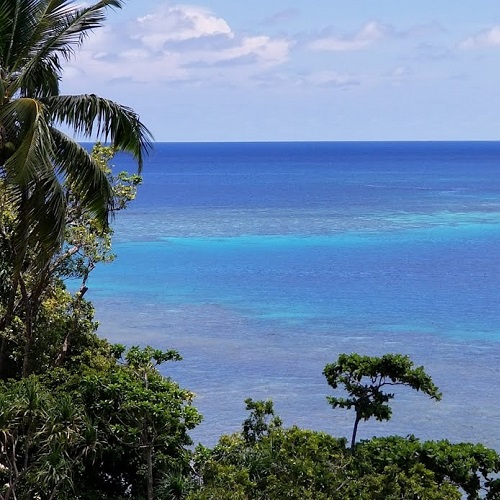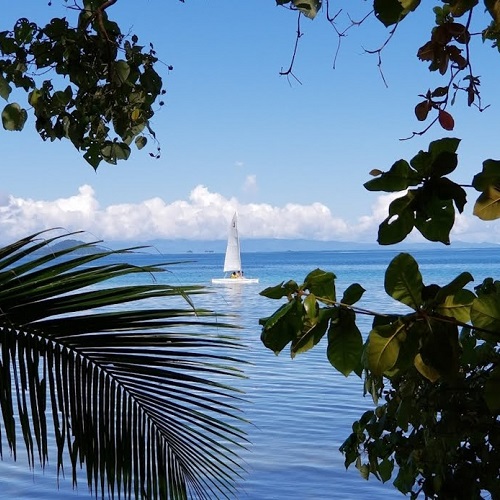
Unique Beach Wedding Favor Ideas for Your Most Memorable Special Occasion

Inspiring Tropical Lighting Ideas: Create A Cozy & Relaxing Beach Vibe At Home
Sea Turtles: An Eternal Symbol of Wisdom, Patience & Longevity
Learn About Their Meaning in Folklore and How You Can Incorporate Their Imagery Into Your Living Space
The sea turtle is an iconic representation of peaceful blue
In this article, we’ll discuss the cultural value of sea turtles in Hawaii and in Fiji where this creature represents particular virtues and is depicted throughout history in art, folklore, superstitions, mythology, and pop culture. We will also look at how you can incorporate their imagery into everyday life and home décor.
Since these creatures are so unique and are beloved by so many people, we believe that everyone should at least know a bit about them and their history with our ancestors. The more we know about and respect these magnificent animals, the more we can contribute to their conservation.
Introduction
For millions of years, sea turtles have journeyed the waters of Earth, carrying deep meaning for humans of numerous cultures. These mysterious animals not only sustained ancient cultures as a food source but they were present in local mythologies and religions as a force of inner guidance and a path to soul-searching.
Today, sea turtles are an important symbol of nature conservation because they are critically endangered animals which are vulnerable to wildlife habitat destruction, environmental contamination, and global climate change.
For those who are not familiar with sea turtles or simply don’t know much about them, it is important to know that there are differences between sea turtles and land turtles which also include the tortoise. Sea turtles are more streamlined in shell and body shape which allows them to move easily in water. Instead of having legs, their limbs are flippers that enable them to swim. Unlike land turtles, sea turtles cannot retract their limbs into their shell.
There are 7 recognized species of sea turtles with each species having its own unique physical characteristics and behaviors.
- Green sea turtle
- Hawksbill sea turtle
- Loggerhead sea turtle
- Olive Ridley sea turtle
- Kemp’s Ridley sea turtle
- Flatback sea turtle
- Leatherback sea turtle
In contrast, land turtles have harder and more dome-shaped and rounded shells which provide protection against predators. They have studier limbs which are true legs that enable them to walk. They are found in a wide variety of habitats from forests and wetlands to grasslands and deserts. Unlike sea turtles, they also have the ability to retract their limbs and head into their shell for protection.
While all tortoises are actual turtles, not all turtles are tortoises. The smaller to medium sized turtles which are commonly referred to as “box turtles” are not tortoises because many live near water and can take refuge in it such as in ponds, lakes, rivers, and streams. It is not uncommon to see box turtles sitting on a log basking in the sun only to suddenly disappear into the water if you walk by too closely. Actual tortoises on the other hand, are strictly land animals. They are also the largest of the turtle species.
Even though their habitats are vastly different, both sea turtles and land turtles play an important part in their ecosystems by aiding in plant propagation, maintaining healthy plant life, contributing to nutrient cycling, and by cleaning up decaying matter.
In the oceans, green sea turtles are among the very few creatures that eat sea grass (manatees eat sea grass as well). Sea grass needs to be constantly cut short to help it grow across the sea floor so grazing helps to maintain the health of these grass beds. They provide breeding and developmental grounds for numerous marine animals. Without them, many marine species that humans harvest would be lost along with lower levels of the food chain.
Sea turtles also use beaches and the lower dunes to nest and lay their eggs. Beaches and dunes are a fragile habitat that depend on vegetation to protect against erosion. Eggs hatched or unhatched, and hatchlings that fail to make it into the ocean are nutrient sources for dune vegetation. This allow the vegetation to grow and become stronger which in turn creates root systems which help to hold the sand in place and protect the beach from erosion.
Symbolism In Various Cultures
Due to their lengthy lifespan, toughness, and slow and steady movement, in many cultures turtles are considered to be keystone symbols of stability, longevity, and consistency. They are particularly significant in the religions and mythology of the people of Pacific, Asia, and North America where they are often presented carrying the Earth on their back. This powerful motif indicates their importance as the most fundamental aspect of Earth’s creation.
Around the world, they have represented bodies of water, the Earth, duration, eternity, and fertility. Some of the earliest evidence of their significance has been found in Israel. Deep within the Manot Cave, a 35,000-year-old turtle-shaped rock was discovered which indicated it was most likely a place of worship for prehistoric humankind.

Turtle-shaped sculpture remains. Photo Credit: Clara Amit, Israel Antiquities Authority via The Jerusalem Post
In Hawaii
The Hawaiian green sea turtle is native to the Hawaiian archipelago but travels thousands of miles when foraging and nesting. It can live around 80 years or more in the wild. In Hawaiian legends, the sea turtle is called “Honu” and is said to have guided the first Polynesians to these islands. Honu has been a central figure to the Hawaiians and is considered to be sacred in Hawaiian folklore as it is believed that their presence brings blessings and luck. One of the verses in the creation chant “Kumulipo” says, “Born is the turtle [Honu] living in the sea”. According to the legend, Honu was born in ‘pō’ which is the darkness where gods and the world were created. So it is not surprising that Honu represents the spiritual guardian for many Hawaiians.

Green sea turtle, image courtesy of: Charles J. Sharp of Sharp Photography via Wikipedia
The ancient art of tapa cloth making which has its origins in the Pacific islands, often features these mystical creatures. Although early Hawaiians used them as source of food, today they are a symbol of nature conservation.

Tapa cloth turtle painting. Photo Credit: Peabody Museum of Archaeology & Ethnology

Langafonua Handicraft Centre and Gallery, Nuku’alofa, Tonga, Photo Credit: Cerulean Bay
Since ancient times, sea turtles have represented highly valued qualities such as endurance, strength, and courage. The shell also represents healing, fertility, and new beginnings.
There are many legends featuring these amazing animals and it was believed that they protect the gods of land and sea.
- One legend says that the god Ku (the God of War) turns into a turtle to protect people from evil spirits and he could also turn the shell into a shield.
- When Kanaloa (the God of Ocean) went among people, he assumed the shape of Honu.
- Another legend describes the protective nature of the sea turtle called “Kailua”. It is said that this Honu would turn into a woman to protect children playing on beaches.
- A sea turtle’s ability to return home after swimming many miles in the sea is said to represent good luck and faithfulness.
- They are considered to be messengers from other realms and are widely respected for their power and abilities. They symbolize life changes or spiritual state transitions and people believe that anyone who encounters a sea turtle can expect to receive a message or guidance from gods about a meaningful journey.
In Fiji
In the far off islands of the South Pacific such as in Fiji, sea turtles also carry a lot of symbolism. Fiji is a known sanctuary where several species thrive in the warm waters. Here, they are called “Vonu” which means “turtle” in Fijian. There are many stories and traditions revolving around Vonu because sea turtles play an important role in the spiritual and cultural lives of the people. They are mentioned in stories, songs, chants, dances, blessings, and rituals.
In the Fijian culture, the sea turtle symbolizes fertility, wellness and protection. The shell is a symbol of heaven while the underside is a symbol of earth. So the sea turtle is considered to be a being who unites heaven and earth. This helps to explain why the sea turtle is featured so prominently throughout Fijian and South Pacific artwork and culture.

Hawksbill sea turtle, image credit: Anita Winter via Gold Ira Guide
- Vonu have been a major part of Fijian history through myths, culture, art, rituals, and chiefly tributes. They are considered to be spiritual deities and are the epitome of endurance, wisdom, fertility, and resilience.
- Centuries ago, sea turtles shells were used as ornaments and in tools that were a part of traditional ceremonies. They were considered to be a food reserved for tribal chiefs and were a connection to ancestral spirits.
- Vonu were also used as valuable gifts and were presented at ceremonies such as a chief’s birth, wedding, or funeral.
- They are considered to be spirits of resilience and survival because of their underwater life and connection to the ocean.
- Today, they are protected throughout the South Pacific as a part of global conservation efforts.

Hand carved Fijian wooden sea turtle with bure and palm tree, Photo Credit: Cerulean Bay Shop
Sea Turtle Spiritual Meaning
For many people, sea turtles are spirit animals which guide us to explore the depths of life. They also appear in dreams facilitating inner searches of ourselves. Their stability helps us to stay on course, even during stressful times. When we tune in to them, we are able to find balance and harmony between the opposing sides of ourselves. They provide a timeless lesson of resilience and endurance, even in hardship. They teach us patience and help us to embrace the fact that positive changes will transform us and help us grow.
The spiritual energy of sea turtles is said to come from the depths of the ocean, just as the spiritual energy of a person comes from the depth of their own soul. The gentleness of sea turtles guides those who see them as spirit animals to clarity and understanding. It is a reminder that a strong emotional balance is important for achieving harmony within ourselves.

Leatherback sea turtle , image by Spiritual Meaning Academy
Sea Turtles In Dreams
In the study of the interpretation of dreams, sea turtles can mean different things, depending on the context of the dream and the dreamer’s personal associations with the animal.
- For women, seeing a sea turtle in their dreams may mean fertility and protection. The dreamer may be expecting a child.
- Seeing a sea turtle may be a sign that the dreamer must be clear and firm in communication in order not to be misunderstood.
- Dreams about chasing a sea turtle may mean that the dreamer needs to face a particular problem in order to resolve it.
- A turtle walking on land denotes that the dreamer should take it slow in life and reflect on where they are on their life’s path.
- Dreams about a turtle lying on its back may mean that the dreamer needs to help someone close to them who needs emotional support.

Image credit: Medium.com
Modern Art & Design
Because sea turtles have such a beautiful form and their movements under water are so graceful and peaceful, they have long been an extremely popular subject in modern art and design. From artwork found in ancient civilizations to today’s contemporary art, sea turtles have been depicted in nearly every type of medium used in the art world. Artists and craftsman have drawn, etched, painted, carved, sculpted, and sewn sea turtle imagery in a myriad of ways to create artwork, jewelry, fashion and home décor accessories, garments, and many other items. Their distinctive shape and behavior is beloved by so many people around the world which only further promotes the significance and protection of these amazing ocean animals.

Bedarra Beach Inn, Korotogo, Fiji. Photo Credit: Cerulean Bay

Photo Credit: elephantstock.com
Sea Turtles In Tropical Home Décor
Sea turtles are often carved, printed, or painted on home textiles and decorative items, inspired by Fijian and Hawaiian cultures. The distinctive shape of their shell can be found on anything from ornamental plates and plush toys to Fijian hand crafted sea turtle bowls. The silhouette is also featured in popular tattoo and logo designs and remains deeply embedded in cultures from



Ramada Suites By Wyndham, Wailoaloa Beach, Fiji. Photo Credit: Cerulean Bay
World Sea Turtle Day
is an annual observance held every June 16th on the birthday of Dr. Archie Carr who is known as the world’s leading authority on marine turtles. This day is not only about expressing love for sea turtles. It also serves to encourage people to protect these ocean animals and to help them survive in their habitats. 6 out of the 7 species of sea turtles are either endangered or threatened so we encourage people to learn everything they can about them and to consider ways they can participate in their conservation and protection.
Ways To Preserve Marine Life
There are many proactive measures you can take to help preserve and protect sea turtles and other marine wildlife. With combined efforts from local communities, non-profit organizations, and various government agencies, we can increase the number of natural habitats where endangered species such as sea turtles can flourish and increase their population. Here’s what you can do:
- Use only reef-safe, mineral sunscreens without nano particles which are known to cause damage to coral reefs and other marine habitats.
- Volunteer and donate to local organizations that protect sea turtles.
- Safeguard natural nesting habitats or create artificial ones by building protection that also reduces noise and lighting.
- Do not leave trash on the beach or in the water. Use the beach responsibly. Help reduce marine trash by volunteering in beach cleanups. Pollution is a serious threat as sea turtles often mistake plastic pieces for actual food.
- Learn and educate others about global plastic pollution and which countries are the true offenders for mismanaged vs managed waste. This link is only one of many which discusses the problem.
- Help prevent illegal wildlife trade (eggs, shells) by buying sustainable, ethically sourced products. Share what you know with others and report any crimes against wildlife.
- Some species of turtles use wetlands during the cold months for hibernation and feeding. Help to protect these wetlands by becoming involved in local preservation activities.
- Learn and educate others about marine bycatch and how it can be avoided at fisheries. Sea turtles are a part of this bycatch.
- Reduce vessel strikes by reducing boating speeds and by being alert, especially when there are posted notices about sea turtles being present in boating areas.
- Report stranded or injured animals to your local animal rescue program. A full list for the US can be found at NOAA Fisheries. For worldwide locations, visit Global Stranding Network.
In Summary
Sea turtles appear in many aspects of our lives. You can find them in the religions, folklore, cultures, art, and mythologies of various people, especially in the Pacific Islands. These magnificent animals are iconic symbols of knowledge, resilience, and good luck and they are certainly worthy of all the attention. You can pay homage to them by learning about them and having their imagery in your home. Take a look at our turtle-inspired collection that includes Fijian Kava bowls, carved sea turtles with removable shells , and other really nice pieces. And don’t forget to share your knowledge and the beauty of these amazing creatures with others!
You May Also Find Interesting
- Fijian Warrior Club Guide: The Beauty and Cultural Significance of These Tribal Weapons
- A Guide to Kava Bowls: Origins, Styles, and Where To Get Them
- Tropical Wall Décor Ideas: Infuse Your Living Space With Tropical Vibes
- Bring Paradise Home: 20 Tropical Living Room Ideas for Every Budget
- Tropical Color Palette Ideas for Every Room
- 10 Top Picks for Outdoor Tropical Plants: Easy-Care Options for a Vibrant Oasis











